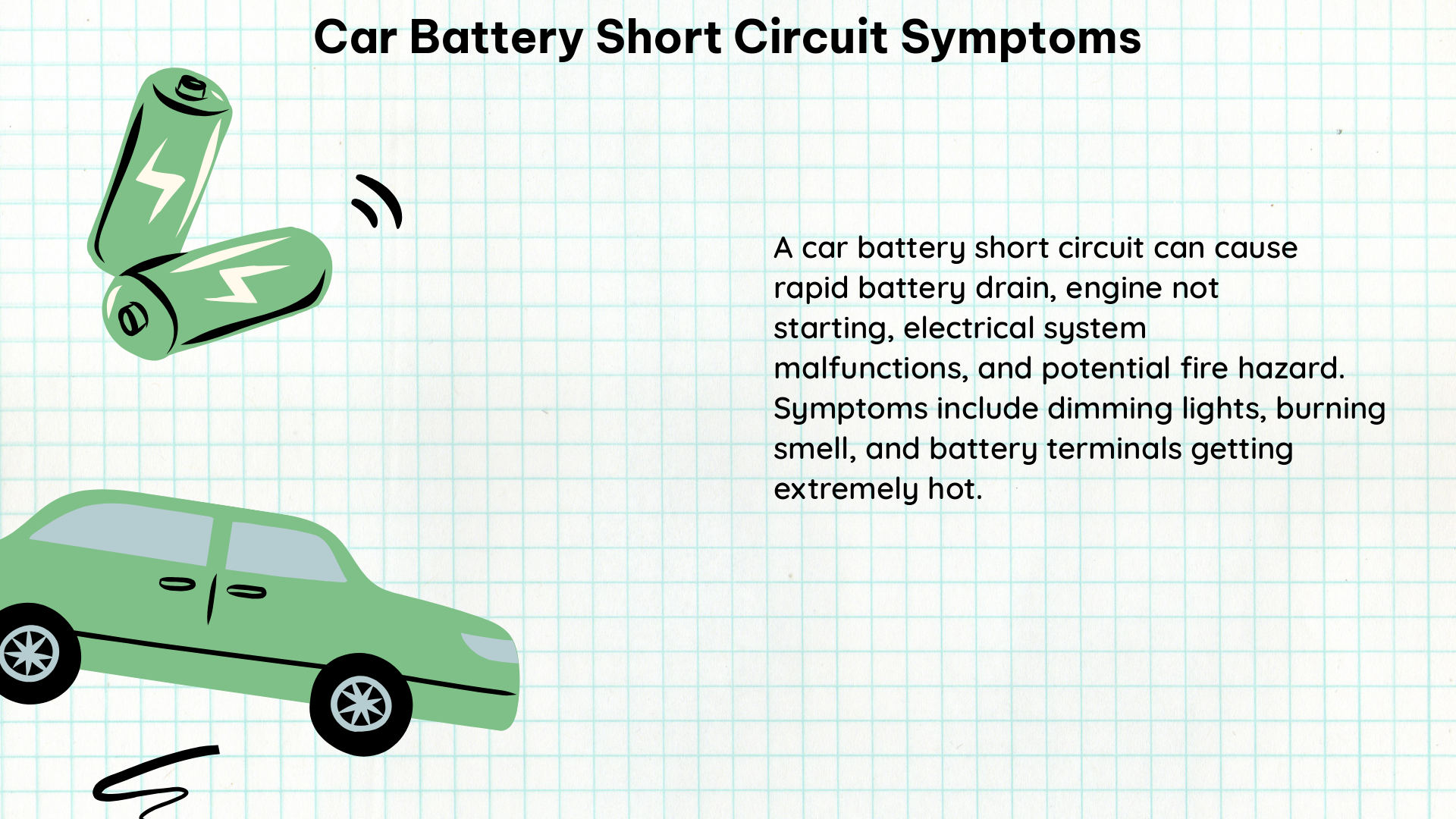A car battery short circuit can be a serious issue, leading to rapid and uncontrolled discharge of electrical energy, significant voltage drops, and potential increases in current. Understanding the technical specifications and measurable data points associated with this problem is crucial for effective diagnosis and prevention.
Voltage Drops and Current Spikes
One of the primary symptoms of a car battery short circuit is a significant drop in voltage. A healthy car battery typically maintains a voltage between 12.6 and 12.8 volts when the engine is off and can reach up to 14.2 volts when the engine is running and the alternator is charging the battery. However, in the event of a short circuit, the voltage can plummet to as low as 8-10 volts, indicating a severe imbalance in the electrical system.
Alongside the voltage drop, a short circuit can also cause a spike in current. A normal car battery should have a resting current of around 0.5-2 amps, but during a short circuit, the current can skyrocket to 100-300 amps or even higher, depending on the severity of the issue. This sudden surge of current can lead to a loud noise from the engine, as the decreased voltage affects the engine’s performance.
Resistance Measurements

Another key indicator of a car battery short circuit is the resistance between the battery terminals. A healthy car battery should have a relatively high resistance, typically in the range of 5-10 ohms. However, in the presence of a short circuit, the resistance can drop to near-zero levels, often less than 0.1 ohms.
To measure the resistance, you can use a multimeter set to the resistance (Ω) function. Simply connect the multimeter’s probes to the positive and negative battery terminals, and the reading should indicate the resistance. If the resistance is significantly lower than the expected range, it may be a sign of a short circuit.
Visual Inspection and Sparking
In addition to the electrical measurements, a visual inspection of the battery terminals and connections can also reveal signs of a short circuit. Look for any signs of damage, such as melted or discolored terminals, or the presence of sparks or arcing when the battery is connected or disconnected.
If you observe any sparking or signs of damage, it is crucial to immediately disconnect the battery and have it inspected by a professional mechanic. Attempting to jump-start a car with a short-circuited battery can be extremely dangerous and may lead to further damage to the electrical system.
Diagnostic Codes and Battery Management Systems
Modern cars are equipped with advanced battery management systems that can detect and diagnose short circuit issues. These systems may generate diagnostic trouble codes (DTCs) that can be read using an OBD-II scanner or diagnostic tool.
Some common DTC codes related to car battery short circuits include:
| DTC Code | Description |
|---|---|
| P0562 | System Voltage Low |
| P0563 | System Voltage High |
| P0564 | Cruise Control Related Voltage Problem |
| P0565 | Cruise Control Switch Circuit Malfunction |
By reading these codes and understanding the associated symptoms, you can better identify and address the root cause of the short circuit problem.
Preventive Measures and Maintenance
To prevent car battery short circuits, it is essential to maintain the battery and electrical system properly. This includes:
- Regular battery inspections: Visually inspect the battery terminals and connections for any signs of corrosion or damage.
- Battery replacement: Replace the battery when it reaches the end of its lifespan, typically every 3-5 years, to avoid potential short circuit issues.
- Proper jump-starting: Always follow the correct jump-starting procedure to avoid accidental short circuits.
- Electrical system maintenance: Regularly have your car’s electrical system, including the alternator and wiring, checked and serviced by a professional mechanic.
By understanding the technical specifications and measurable data points associated with car battery short circuits, you can effectively diagnose and address this issue, ensuring the safety and reliability of your vehicle.
References:
- Can short circuit during jump start damage the vehicle?
- Toward a Safer Battery Management System: A Critical Review on Diagnosis and Prognosis of Battery Short Circuit
- What Can You Expect from a Short Circuit in Your Car?
- Experimental investigation on the thermal runaway propagation of lithium-ion battery under short circuit
- Thermal runaway propagation and fire risk assessment of lithium-ion battery packs under short circuit

The lambdageeks.com Core SME Team is a group of experienced subject matter experts from diverse scientific and technical fields including Physics, Chemistry, Technology,Electronics & Electrical Engineering, Automotive, Mechanical Engineering. Our team collaborates to create high-quality, well-researched articles on a wide range of science and technology topics for the lambdageeks.com website.
All Our Senior SME are having more than 7 Years of experience in the respective fields . They are either Working Industry Professionals or assocaited With different Universities. Refer Our Authors Page to get to know About our Core SMEs.